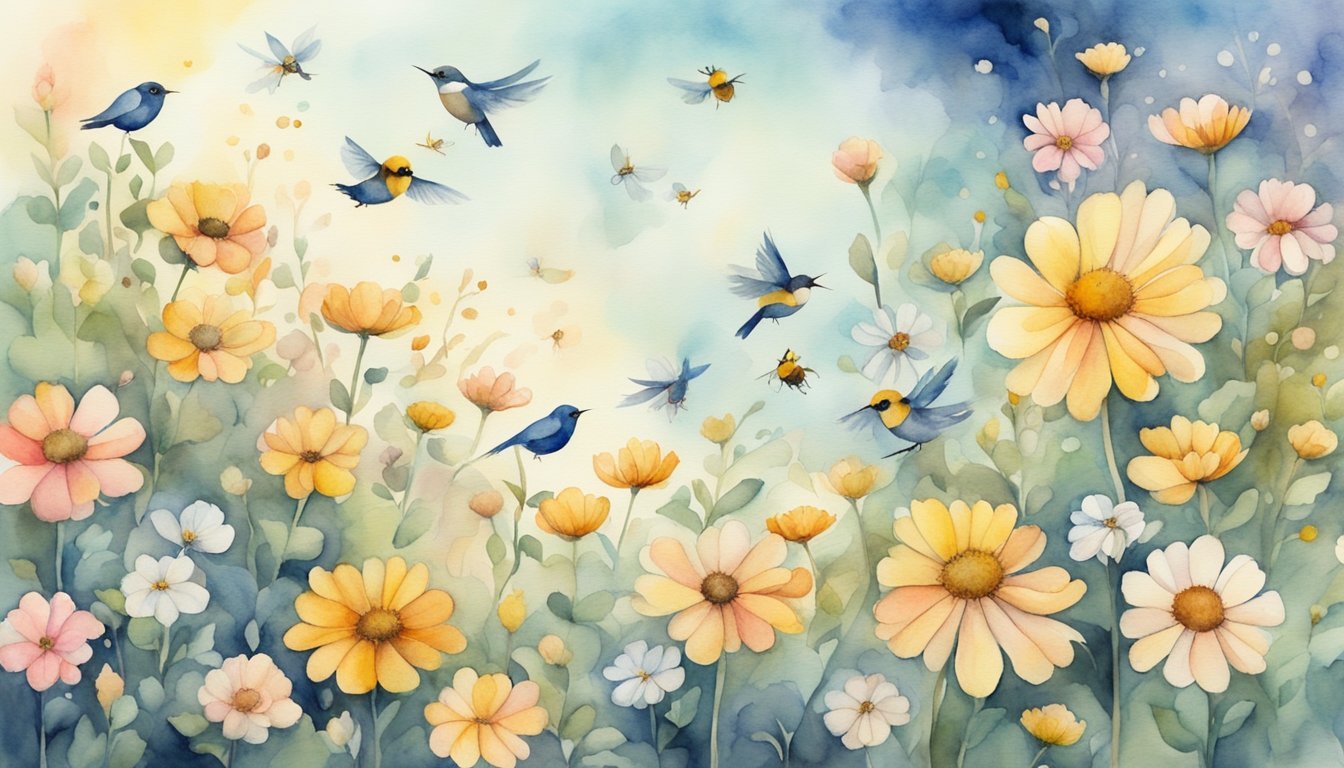Origins and Evolution of the Phrase
Historical References
The origins of the phrase “the birds and the bees” as a metaphor for explaining sexual reproduction to children are not entirely clear. One of the earliest known references can be traced back to the Diary of John Evelyn in 1644, where he wrote about the process of pollination in nature, indirectly hinting at human reproduction.
Literary Contributions
The connection between birds, bees, and human sexuality is often attributed to Samuel Taylor Coleridge’s poem, Work without Hope, published in 1825. The poem did not explicitly mention the phrase but alluded to the natural activity of birds and bees.
The phrase can also be connected to John Burroughs’ essays in his book Sharp Eyes and Other Papers. Although the term “birds and the bees” was not used directly, the essays described how birds and bees are metaphorical examples of the reproductive process.
Pop Culture and Expansion
In popular culture, the phrase gained wider recognition with the Cole Porter song, Let’s Do It, Let’s Fall in Love (1928), which used the line “Birds do it, bees do it.” This further strengthened the association of the euphemism with human sexuality.
As the phrase became more widely used, it has been referenced and parodied in numerous media forms, including television shows like The Simpsons and songs by bands like The National. In 2010, The Charleston Gazette published an article crediting Cole Porter for popularizing the term and linking it more conclusively with the talk about sexual contamination (source).
Over time, “the birds and the bees” has become a well-known English language euphemism for discussing human reproduction in a friendly, approachable manner particularly for young audiences.
Metaphorical Meanings and Educational Use

Nature’s Reproductive Processes
Nature is home to numerous intricate reproductive processes. Bees play a vital role in pollination, transferring pollen from one flower to another and eventually leading to the creation of fruits and seeds. This aspect of nature can be seen as a parallel to human sexual reproduction. Likewise, birds, known for their elaborate courtship displays, lay eggs through which new life is born1.
Human Sexuality and Reproduction
When discussing the mechanics of human sexuality and reproduction, “the birds and the bees” is a commonly used euphemism. This phrase has its roots in the natural world, where it is easy to observe bees pollinating flowers and birds laying eggs2. By drawing upon nature’s reproductive processes, the metaphor introduces children to the idea of reproductive acts and their outcomes. It can form a basis for deeper conversations about sexual intercourse, fertilization, and babies.
Euphemistic Communication in Parenting
“The birds and the bees” talk is a way for parents to communicate complex information to their children in a more approachable and age-appropriate manner. This euphemistic approach softens the content, creating an indirect and more palatable way for children to learn about human sexuality3.
In America, the use of the phrase as a euphemism for sex is common, and it even inspired the creation of a well-known sex education book specifically aimed at children. By utilizing easy-to-understand concepts from the natural world, parents can gradually introduce sensitive topics such as love, relationships, and the facts of life to their children4.
In conclusion, the phrase “the birds and the bees” serves as a powerful tool for parents to communicate complex information related to human sexuality and reproduction. Drawing upon natural processes and using a friendly, euphemistic tone, this approach helps facilitate conversations that can contribute to a deeper understanding of life and its origins.

